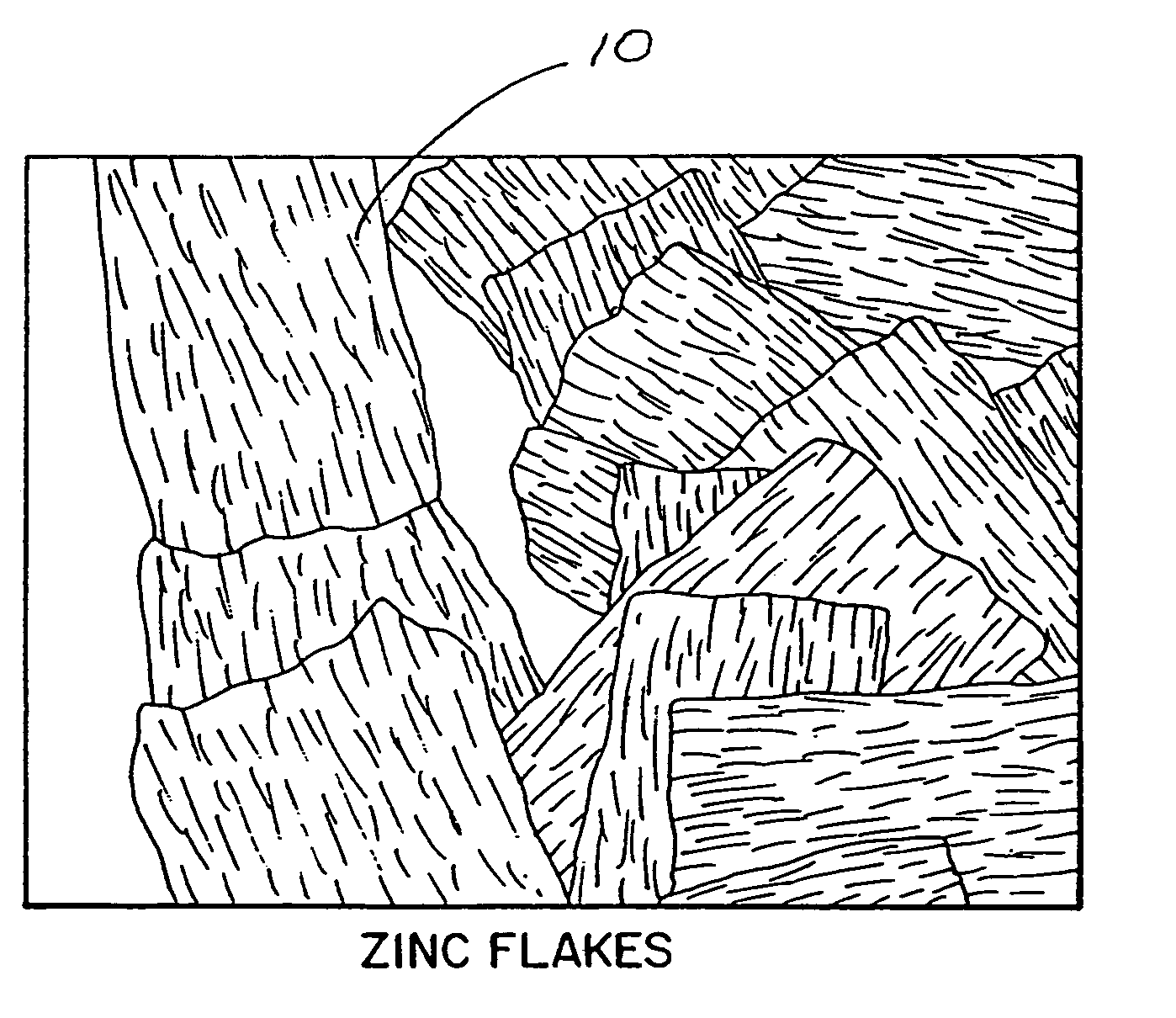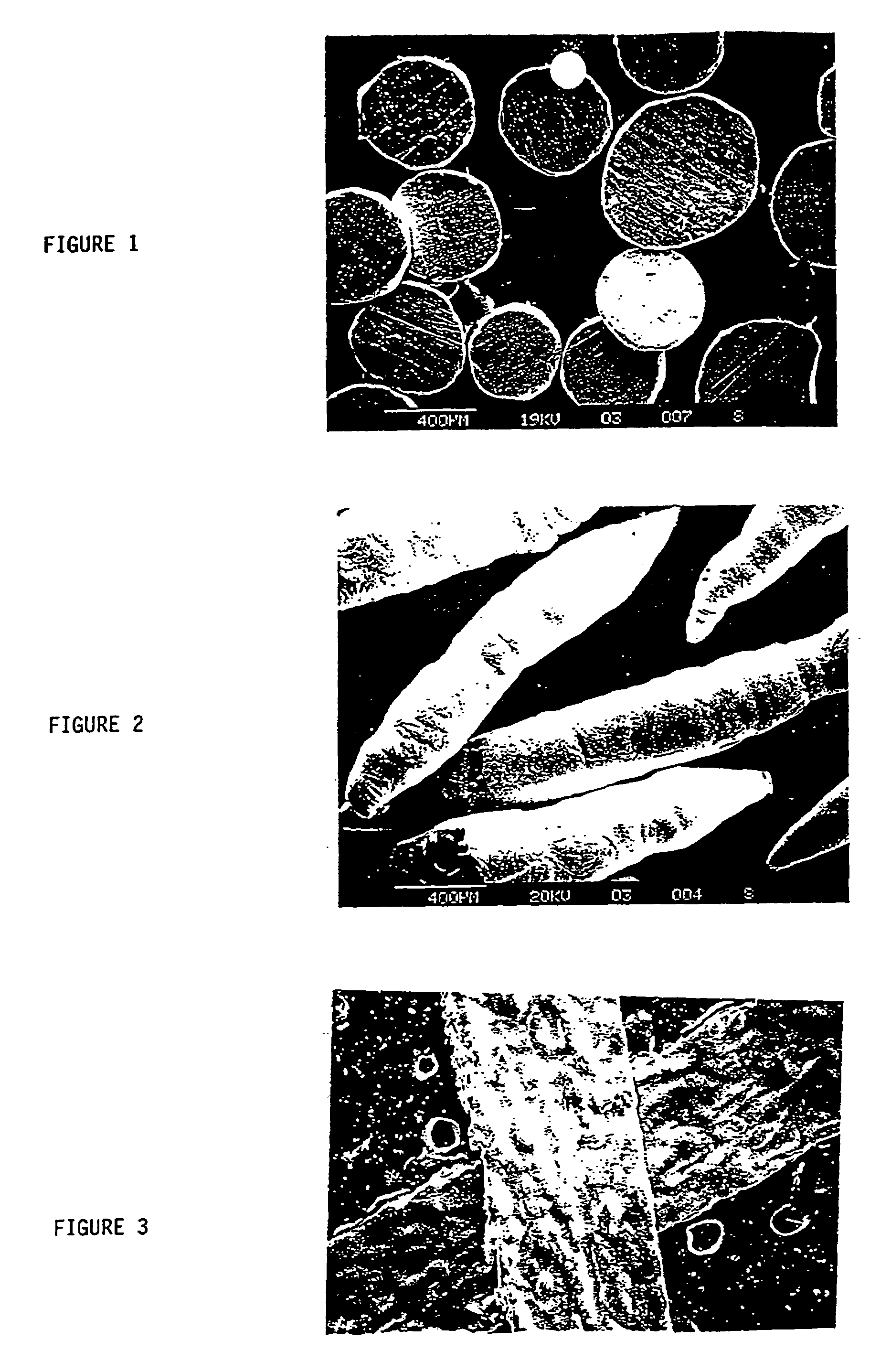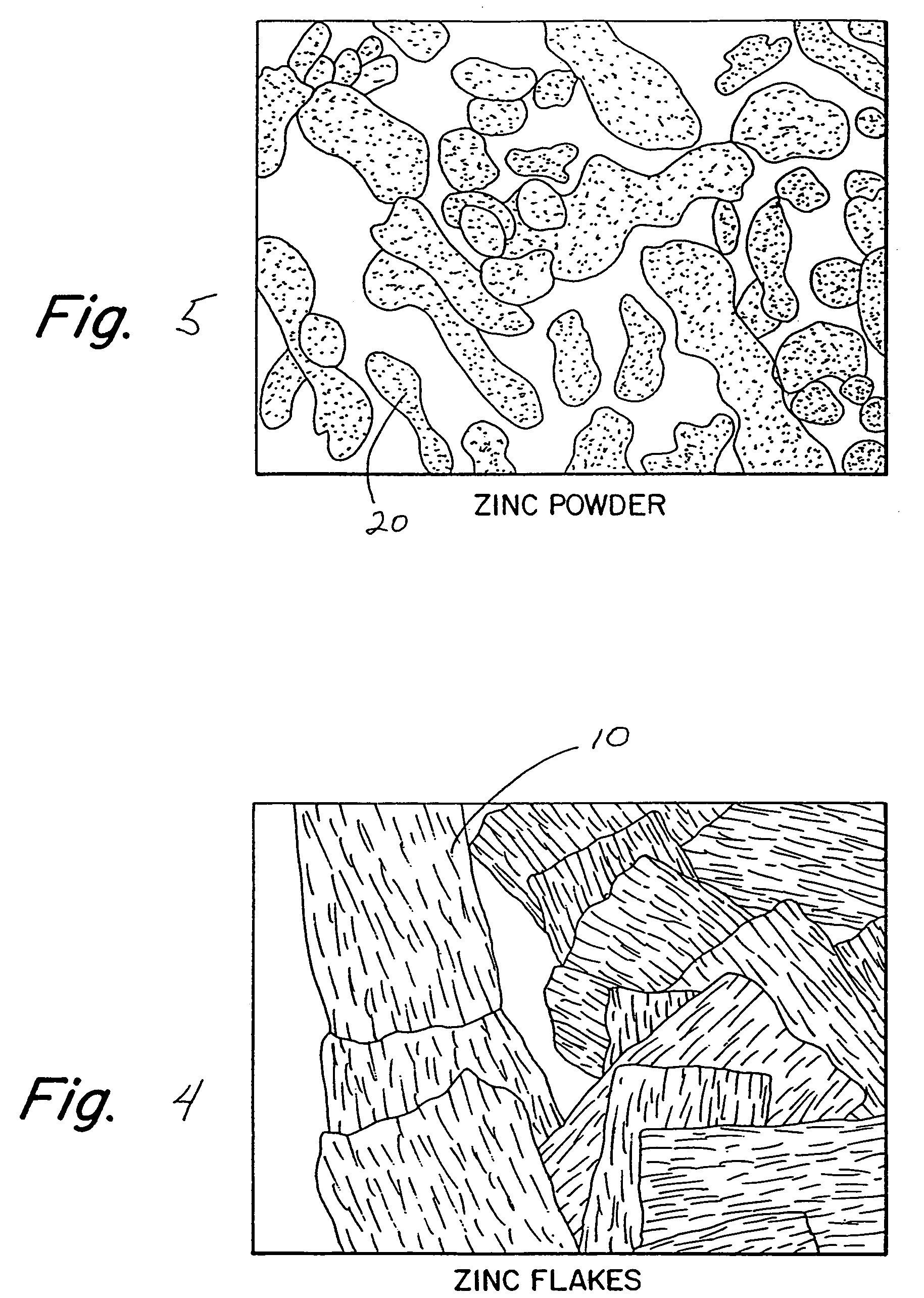Zinc shapes for anodes of electrochemical cells
a technology of electrochemical cells and zinc shapes, applied in the direction of primary cell electrodes, non-aqueous electrolyte accumulator electrodes, cell components, etc., can solve the problems of poor electrical contact, increase in corrosion, and reduce the space available for reaction products
- Summary
- Abstract
- Description
- Claims
- Application Information
AI Technical Summary
Benefits of technology
Problems solved by technology
Method used
Image
Examples
example 1
[0033]The tap density of all zinc samples were first measured according to the following procedure:[0034]1. Zinc is put in a pre-weighed 25 ml measuring cylinder.[0035]2. The zinc is then tapped on a rubber bung whereby the level of the zinc falls.[0036]3. Extra zinc is added in stages until the zinc level is exactly 25 ml in the measuring cylinder.[0037]4. The measuring cylinder is weighed again.[0038]5. The weight of zinc which occupies 25 ml can then be calculated.[0039]6. The Tap density is the weight of zinc which occupies 25 ml / 25 ml
The results were calculated and are tabulated in Table 1.
[0040]
TABLE 1Zinc typeTap Density (g / cc)Needles3.6Conventional powder3.4Flakes1.3
example 2
Numerous groups of cells were manufactured with two different cell formulations.
[0041]
Formulation 1Cathode Ah =2.7EMD:C =12:1ID (mm) =8.73Anode Ah =3.3Zinc Content =69%H2O / EMD =0.24
[0042]
Formulation 2Cathode Ah =2.7EMD:C =17:1ID (mm) =9.00Anode Ah =3.3Zinc Content =63H2O / EMD =0.24
[0043]
Common FeaturesEMDGHU by TOSOHGraphiteSuperior GraphiteKOH Conc.35%Can CoatingLB1099 by Timcal
[0044]
Zinc TypesAlloysDesignationSupplierZinc PowderBICPowderBig River ZincZinc FlakeBICK308Transmet of OhioZinc FlakeNOT BICK109Transmet of OhioZinc NeedlesBICDoralloy 107 GNEckart-Doral ofSwitzerland
example 3
The cells were tested according to the following drop test method. The results of the testing are compiled in Table 2, and presented graphically in FIG. 7.
[0045]1. The SCA (Flash Amps) of the cell is measured 1 week after manufacture.[0046]2. The cell is allowed to fall down a vertical shaft. The length of the shaft is 1 m. To start the drop the cell is rolled so that it always falls on its side rather than the ends.[0047]3. The SCA (Flash Amps) of the cell is measured immediately after being rolled down the vertical shaft.
[0048]
TABLE 2AnodeAmperageAmperageAmperagecomp.before dropafter dropmaintenance (%)100 / 0 / 7016425100 / 0 / 63700 95 / 5 / 6318528 90 / 10 / 6319947 85 / 15 / 6321943
[0049]Table 2 shows the results of the drop test for various anode concentrations. The concentrations should be interpreted as (% of zinc powder / % of zinc flake / anode zinc weight percent). Amperage maintenance is amperage after drop divided by amperage before drop.
[0050]Referring now to FIG. 7, there is shown a graphic...
PUM
| Property | Measurement | Unit |
|---|---|---|
| Fraction | aaaaa | aaaaa |
| Fraction | aaaaa | aaaaa |
| Fraction | aaaaa | aaaaa |
Abstract
Description
Claims
Application Information
 Login to View More
Login to View More - R&D
- Intellectual Property
- Life Sciences
- Materials
- Tech Scout
- Unparalleled Data Quality
- Higher Quality Content
- 60% Fewer Hallucinations
Browse by: Latest US Patents, China's latest patents, Technical Efficacy Thesaurus, Application Domain, Technology Topic, Popular Technical Reports.
© 2025 PatSnap. All rights reserved.Legal|Privacy policy|Modern Slavery Act Transparency Statement|Sitemap|About US| Contact US: help@patsnap.com



